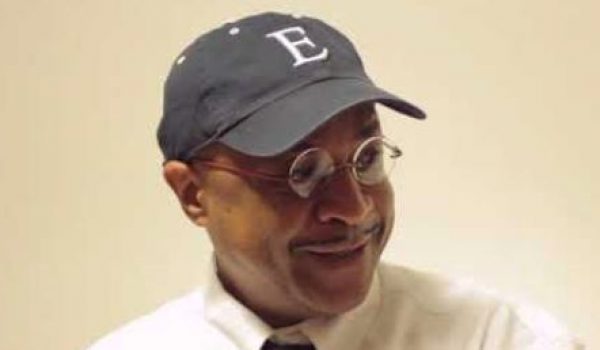
If you aren’t sure the case of Bowe Bergdahl warrants the general court-martial ordered this month by General Robert Abrams, commanding general of Forces Command, consider the story of a Navy SEAL, Senior Chief Jimmy Hatch, and the combat dog who served with him during a rescue attempt for Bergdahl shortly after Bergdahl left his platoon in 2009.
Perhaps you haven’t been convinced by the claims of Army sources and family members that other soldiers were killed (see here as well) in the months-long search mounted by U.S. forces for Bergdahl. Chuck Hagel, secretary of defense when Bergdahl was ransomed for five Guantanamo detainees in 2014, said he didn’t know of any “circumstances or details of U.S. soldiers dying as a result of efforts to find and rescue Sgt. Bergdahl.” Maybe that careful-sounding skepticism seems conclusive to you.
But the story of Hatch and the combat dog Remco is especially convincing, because Hatch himself came back from one of the rescue attempts – which he knew to be for Bergdahl – and his information is corroborated by another SEAL on the same mission.
Will this presidential election be the most important in American history?
Bergdahl was captured by the Taliban after leaving his unit in Paktika Province, Afghanistan, on 30 June 2009.
In a rescue attempt mounted on 9 July 2009, Senior Chief Hatch, Senior Chief Mike Toussaint, and Toussaint’s combat dog, Remco, were part of a team inserted by helicopter at a location where Bergdahl was thought to be held.
The Stars and Stripes narrative emphasizes (correctly) the exposure and difficulties inherent with hostage rescue missions:
Hostage rescue situations are notoriously dangerous. Unlike other operations in which a unit will take time to review and rehearse, the rescue is a mission of opportunity – there is little time for planning or thorough intelligence gathering and the captors are alert and ready. And there’s a hostage among them who must be protected.
And “this one was no different.” The helicopters, which could be heard for miles, heralded their own coming. The helos came under fire as they approached the landing area; the rescue team, once inserted, came under fire too. Seeing movement near a large building, Hatch and Toussaint maneuvered toward it, diverting when they saw two men in traditional clothing run off in a different direction.
They lost sight of the two men. Stars and Stripes continues:
Hatch and Toussaint have different recollections of the next moments. But both agreed Remco, on orders from his handler, charged forward, running directly at the two fighters who had taken shelter in a nearby culvert. Both said the dog saved their lives, by exposing the location of the enemy.
It was his last act. The men watched as one of the fighters stood and fired at Remco point blank, shooting him in the head. Remco flew backwards.
Within seconds, Hatch was also shot in his leg in a devastating blow to his femur. He, too, flew into the air by the force of the impact and landed on the ground in a shattering of pain.
Toussaint could hear Hatch screaming as he ran toward the culvert firing, and managed to kill both men before they could shoot him. Then he dragged Remco back to where corpsmen were already working on Hatch.
Toussaint and Remco were later each awarded the Silver Star. Toussaint had the following recollections of that night:
As he stood there, alongside his dead dog and his wounded buddy, still in the adrenalin of the fight, Toussaint’s anger was at the enemy – the people trying to kill them. Later, as he sat on the evacuation helicopter, it started to gnaw at him that Bergdahl’s decisions brought them to that place.
He watched his best friend – the dog he’d trained with and who was by his side for two years – killed, and his buddy shot and screaming in pain “all because of a selfish person that just put all of us at risk,” Toussaint said. “But we were there to do a job.”
Notably, if Toussaint was in the evacuation helo in early July 2009, resenting “Bergdahl’s decisions,” that makes it pretty clear the deckplate-level understanding about Bergdahl was already that he had gone off-post on his own, for no good reason. We’ve heard that from other sources (including fellow soldiers from his platoon), but Toussaint’s account reaffirms that the picture of how Bergdahl came to be a Taliban hostage – by deserting – was widespread in-country.
Jimmy Hatch had a long and tortuous row to hoe after that night. He endured 18 surgeries on his shattered leg over the next two years, lost his SEAL career due to the injuries, and had to overcome a terrible sense of guilt and self-doubt that only his fellow special-forces comrades could probably fully understand.
It took Hatch a long time to come to grips with that day on the battlefield: his screaming in pain despite all his training to never to give the enemy indication of your whereabouts; his being so badly hurt he had to leave the fight in the middle, and his men forced to risk their lives to save him. He blamed himself.
The same helicopters that flew into a hail of bullets to drop the men off, returned to pick him up and take him to safety. As he lay in a hospital bed for months, and endured 18 surgeries on his leg, he played the events over and over, and wondered how he could have done things differently.
And Remco – Hatch had grown close to the dog. He’d taken to running with him. And his death brought bitter memories of another combat dog – his own dog Spike – who had died in his arms three years earlier in Iraq.
Hatch had an extremely painful reckoning with himself in the years after the failed rescue mission:
In fact, Hatch hit bottom on a drunken day in his backyard some two years later when his wife and a police officer had to talk him out of shooting himself and handing over the gun. He went through two stints in a psychiatric ward, pushed by his wife and two war buddies before he could accept that while some anguish will never go away, he had tools to manage it and to believe things could be better.

Things are better now; Hatch runs a nonprofit that helps retired combat dogs. The ghosts of the past are still there, however.
Hatch keeps a picture of Remco in his office “because, you know, I wouldn’t be here,” he said. “And you know what? Neither would some of the other guys if it wasn’t for him. He totally saved us.”
Bergdahl is in the news again. Not long ago, Hatch’s wife walked in on him holding the picture and crying. She set the picture down and held her husband.
“You never really get better from it,” he said. “You just learn how to deal with it, hopefully.”
Stars and Stripes summarizes the salient point in all this:
Somehow, all of it was just a little more difficult to swallow because of the circumstances. Bergdahl made a decision to leave his base, Hatch said. That changed the course of a lot of other lives.
I don’t think too many of my shipmates – from all services – would disagree with me on this. It would be easier to deal with the pain, self-blame, and loss if you knew that you were trying to rescue captives who were taken in honorable circumstances. Even if you failed, you’d know that what you were trying to do was worthwhile. You’d know it was what you owed your comrade – that it was necessary and right, nothing more than what had to be done. You’d know it was what he would do for you.
But his would-be rescuers didn’t know that about Bergdahl.
A general court-martial can award the highest level of punishment for the charges against Bowe Bergdahl. Jimmy Hatch is prepared to testify, if called, to the cost of Bergdahl’s decisions for the lives of his fellow service members. He says it’s right for Bergdahl to have his day in court; a fair trial is what America is about.
But it should be a trial that lays everything on the table: one in which the prosecution must justify the charges in light of the high penalties that can be imposed. In this case, the maximum is life in prison. Bergdahl may well not get that much. But I trust a jury of military officers to decide that as best it can be done, given the facts and implications. A general court-martial is exactly what is called for in Bergdahl’s case.




